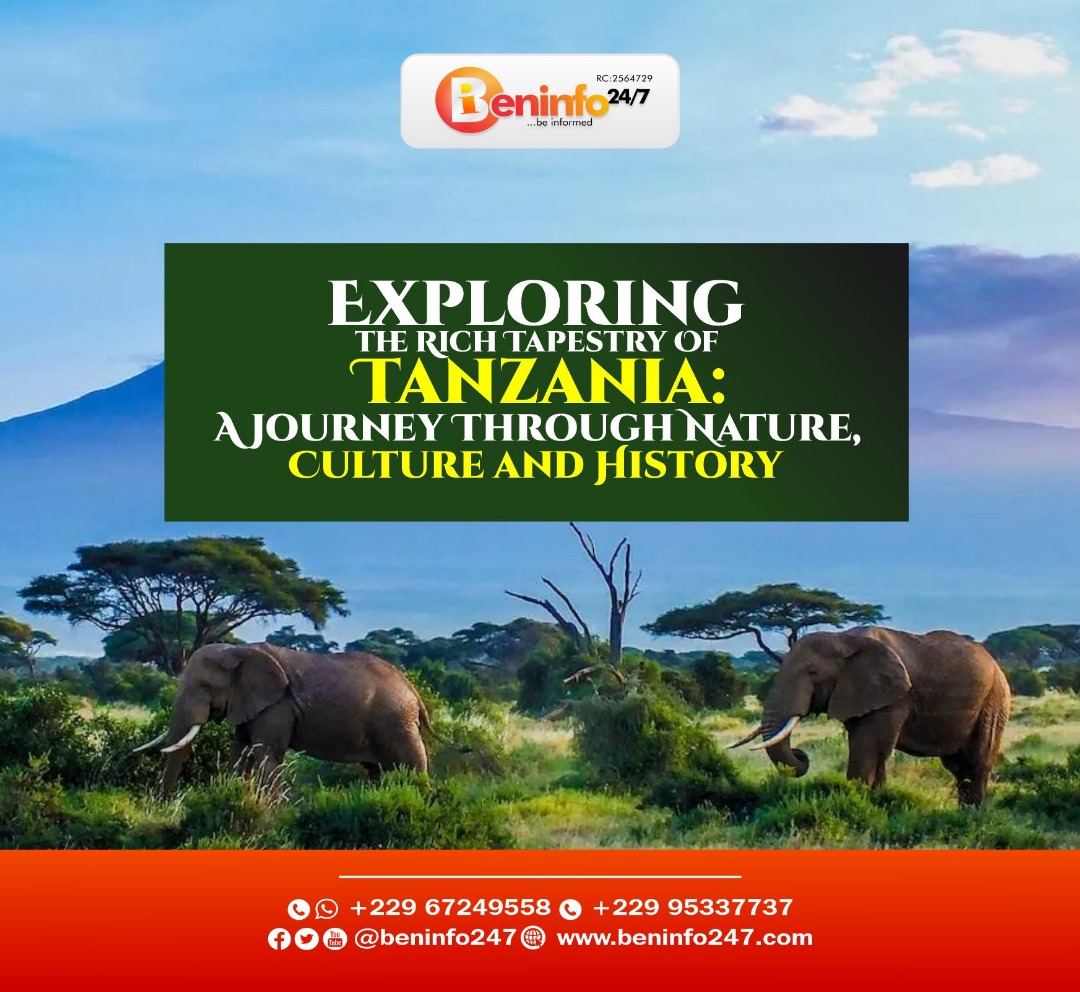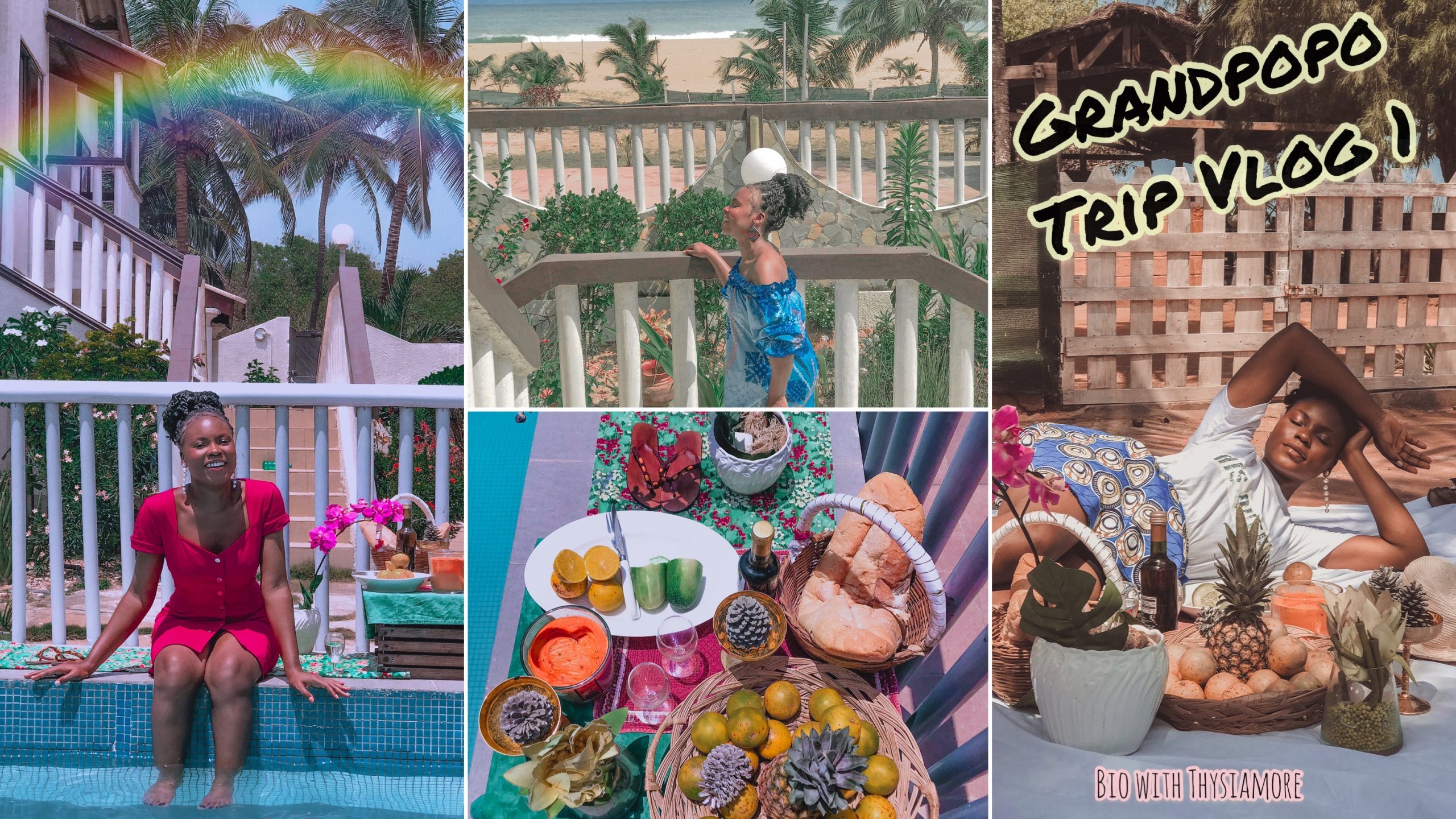Exploring the Rich Tapestry Of Tanzania: A Journey Through Nature, Culture and History.
Tanzania, often referred to as the ” soul of Africa“, is a land of mesmerizing beauty, diverse cultures, and a rich history that stretches back millennia. Located in East Africa, this vast and enchanting country is known for its stunning landscapes, wildlife, and warm hospitality. In this article, we will embark on a virtual journey through Tanzania, exploring its natural wonders, cultural heritage, and historical significance.
Geography and natural beauty;
Tanzania’s diverse landscapes Tanzania’s geographical diversity is nothing short of astounding from the iconic plains of the Serengeti to the majestic heights of Mount Kilimanjaro, the country’s landscapes are incredibly varied. Let’s start our journey by delving into some of Tanzania’s most notable natural wonders.
- Serengeti National Park: The Serengeti is a name synonymous with wildlife and great African migration spanning over 14,750 square kilometers, it’s home to the famous ” Big Five” lions, leopards, elephants, buffaloes, and rhinoceroses witnessing the annual wildebeest migration here is a once – in – a – lifetime experience.
- The Geography of Tanzania: A land of contrasts
Tanzania’s geography is as diverse as it is stunning. It is a land of contrasts, where one can find everything from snow-capped mountains to pristine tropical beaches. At the heart of Tanzania lies the Great Rift Valley, a geological wonder that has shaped the country’s landscape over millions of years. This vast valley is home to numerous lakes, including Lake Tanganyika, one of the deepest freshwater lakes in the world.
The jewel of Tanzania’s geography, however, is Mount Kilimanjaro Rising majestically to a height of 19,341 feet (5,895 meters) , Kilimanjaro is Africa’s highest peak and the tallest freestanding mountain on Earth’s iconic snow-capped summit is a sight to behold for trekkers and mountaineers from around the globe.
The wildlife Extravaganza: safaris in Tanzania.
Tanzania is synonymous with wildlife safaris, and for good reason. The country boasts some of the most iconic and diverse ecosystems on the African continent. The Serengeti National Park, often referred to as the ” endless plain”, is a vast expanse of grassland and savanna, home to the Big Five and hosting the spectacular Great Migration. Every year, millions of wildebeests, Zebras, and other herbivores make their way across the Serengeti in search of greener pastures.
Cultural diversity: The Heartbeat of Tanzania.
- Tanzania is not just about its natural wonders, it’s a cultural mosaic with over 120 ethnic groups, each contributing to the nation’s unique identity. The Swahili culture, deeply influenced by Arab, Indian, and African traditions, is prevalent along the coast and on the islands. Stone Town in Zanzibar showcases this cultural fusion in its architecture, cuisine, and way of life.
Geography and environment: Tanzania is known for its stunning geographical diversity. It includes the iconic Mount Kilimanjaro, Africa’s highest peak, and the Serengeti National Park, home to the great wildebeest migration.
The country also boasts the exotic Zanzibar archipelago, known for its pristine beaches and rich cultural heritage.
Tanzania’s landscape is incredibly varied, encompassing mountains, savannah, forests, and lakes. Lake Victoria, lake Tanganyika, and lake Malawi form part of Tanzania’s border, and they are among the largest freshwater lakes in the world. The country is also home to a variety of wildlife, making it a prime destination for safaris.
Historical overview: Tanzania’s history is marked by a series of migrations, kingdoms, and colonial influences.
The earliest inhabitants of the region were the indigenous Bantu-speaking peoples. Later, Arab traders established settlements along the coast, which became centers of trade and Islamic culture.
In the late 19th century, European colonial powers, particularly Germany and later Britain, exerted control over different parts of what is now Tanzania. The legacy of this colonial period is still evident in the country’s infrastructure, governance, and culture.
Independence and post-colonial Era: Tanzania gained independence from Britain in 1961, with Julius Nyerere as its first president Nyerere played a significant role in shaping Tanzania’s identity and ideology. He introduced the concept of ” ujamaa” which aimed at building a socialist and self-reliant society. While this ideology had noble intentions, it faced challenges in implementation. Tanzania also played a pivotal role in supporting liberation movements in southern Africa, providing military and logistical support.
Economy and development: Tanzania’s economy has shown steady growth in recent years, driven by agriculture, mining, and tourism. Agriculture employs the majority of the population and is a crucial component of the economy with cash crops like coffee, tea, and tobacco playing a significant role. The mining sector has grown in importance, with Tanzania being one of Africa’s leading producers of gold. Natural gas discoveries have also opened up opportunities for energy production and export.
Tourism remains a cornerstone of the economy, attracting travelers from around the world to experience its wildlife and cultural treasures.
Investments in infrastructure, including airports and lodges, have enhanced the tourism industry’s appeal.
Challenges and opportunities: while Tanzania has made progress in various sectors, it also faces challenges. Infrastructure development, access to quality education and health care, and income inequality remain areas of concern.
Nonetheless, the country’s potential is vast continued investment in sustainable tourism, agriculture, and education, combined with responsible governance, can pave the way for a brighter future for Tanzania and its people.
Tanzania’s appearance is incredibly diverse, thanks to its varied geography and landscapes.
Tanzania has a diverse landscape that includes
1. Coastline: Tanzania has a picturesque coastline along the Indian Ocean, featuring beautiful sandy beaches and coral reefs. The Zanzibar archipelago, a part of Tanzania, is renowned for its exotic beaches.
- Forests: The country has lush forests, such as those in the Udzungwa Mountains and the Mahale Mountains which are home to various species of primates and other wildlife.
- Cultural diversity: Tanzania’s landscape is matched by its cultural diversity, with over 120 ethnic groups, each with its traditions and lifestyles. You’ll see a mix of traditional villages, bustling markets, and vibrant urban centers.
- Cities: Major cities like Dar es Salaam, Anisha, and Dodoma are bustling with activity, offering a blend of modern and traditional elements.
In summary, Tanzania is a visually stunning country with a wide range of landscapes, from towering mountains to sweeping plains, pristine lakeshores of tropical beaches, and dense forests to bustling cities. Its visual diversity is one of the many reasons why it’s a popular destination for travelers and adventurers.
Tanzania is located in East Africa and is bordered by Kenya to the north, Uganda to the northwest, Rwanda, Burundi, and the Democratic Republic of the Congo to the west, Zambia and Malawi to the southwest, Mozambique to the south, and Indian ocean to the east. It also shares a border with the small island nation of Comoros.
Capital: Dodoma is the official capital of Tanzania, but the largest city and economic hub is Dar es Salaam.
Population: As of my last knowledge update in September 2021, Tanzania had an estimated population of over 61 million people, please note that population figures may have changed since then.
Languages: Swahili is the national language of Tanzania and is widely spoken across the country. English is also used in government, education, and business.
Geography: Tanzania boasts diverse geography including
Savannah, mountains, lakes, coastline.
Culture: Tanzania is culturally diverse, with over 120 different ethnic groups. Each group has its own languages, traditions, and customs. The culture is influenced by African, Arab, Indian, and European elements due to historical interactions and trade.
A vibrant present and future: Today, Tanzania is a nation in transformation, balancing its commitment to preserving nature with the demands of a modern world. The capital, Dodoma, is becoming a focal point for government functions, while Dar es Salaam remains a bustling economic center.
As Tanzania continues to evolve, it retains its allure as a destination that offers the quintessential African experience. Whether you seek the thrill of a safari, the tranquility of tropical beaches, or a glimpse into diverse cultures, Tanzania invites you to embark on a journey of discovery in this land of unparalleled beauty and cultural richness, Tanzania’s past, present, and future converge to create a unique tapestry that leaves an indelible mark on all who explore its wonders.
Certainly, let’s delve deeper into Tanzania
1 Geography
- Located in East Africa
- Borders eight countries: Kenya, Uganda, Rwanda, Burundi, the Democratic Republic of the Congo, Zambia, Malawi, and Mozambique.
- Has a coastline along the Indian Ocean to the east
2 capital and major cities:
- Dodoma is the official capital, while Dar es Salaam serves as the largest economic capital.
3. Population:
- The population was approximately 61 million as of my last update in September 2021
4. Official languages:
- Swahili and English are the official languages
5. Government:
- Tanzania is a presidential republic with a multi-party system.
- The president serves as both the head of state and government.
6 Economy:
- Diverse economy including agriculture, Mining, Manufacturing, and tourism.
- Agriculture is a significant employer, with cash crops like coffee, tea, cotton, and tobacco being key exports.
- Rich in natural resources, including minerals such as gold, diamonds, and tanzanite.
7. Currency:
- Tanzanian shilling ( TZS) is the official currency
8. Tourism :
- Renowned for its wildlife and natural beauty
- Home to world-famous national parks like the Serengeti and the Ngorongoro Conservation Area.
- Popular for safaris, climbing Mount Kilimanjaro, and relaxing on the beaches of Zanzibar.
- Culture :
- Highly diverse with over 120 ethnic groups
- Prominent ethnic groups include the Sukuma, Chaga, and Maasai
- Rich cultural traditions, music, dance, and art.
- Wildlife :
- Abundant wildlife, including the Big Five ( lion, elephant, buffalo, leopard, rhinoceros)
- The annual Great Migration in the Serengeti is a major natural spectacle.
- Zanzibar:
- The semi-autonomous region consists of several islands off the coast.
- Known for spice production, historic stone Town, and beautiful
- beaches
12. conservation:
- Tanzania places a strong emphasis on wildlife conservation with various national parks and conservation initiatives.
- Efforts to combat poaching and protect endangered species.
- History :
- Formerly a colony of Germany and later Britain, it gained independence in 1961.
- Merged with Zanzibar in 1964 to form the United Republic of Tanzania
- Education:
- Education is compulsory and free in primary schools
- Efforts have been made to improve access to education, but challenges remain.
- Health care:
Improvements in healthcare infrastructure and access to medical services have been made in recent years.
TANZANIA CUISINE
Tanzania cuisine is diverse and influenced by various cultures and regions some popular dishes include:
- Ugali: A staple food made from maize flour, similar to a stiff porridge, often served with sauces, stews, or grilled meat.
- Nyama Choma: Grilled meat, usually goat, beef, or chicken, seasoned with spices and often served with a side of vegetables.
- Pilau: A fragrant rice dish cooked with spices, often featuring meat or vegetables.
- Chapati: flatbread that’s a common accompaniment to many Tanzanian dishes.
- Samosa: fried or baked pastry filled with meat, vegetables, or lentils, often enjoyed as a snack.
- Mchuz wa samaki: A fish stew made with various spices and coconut milk, usually served with rice or ugali.
- Mandazi: sweet, deep-fried doughnuts or bread rolls, often served with tea.
- Kachumbari: A fresh salad made from tomatoes, onions, and chili peppers, often served as a side dish.
- Ndizi Nyama: A dish made with ripe bananas cooked with meat, creating a sweet and savory combination.
Tanzanian cuisine reflects the country’s rich cultural diversity, and you’ll find regional variations in dishes and flavors throughout the country.
Tanzania is not the biggest country in the world. It is, however, one of the largest countries in Africa, in terms of land area, Algeria is the largest country in Africa, and Russia holds the title for the largest country in the world by land area. Tanzania ranks among the top ten largest countries in Africa but is not the largest globally
TANZANIA STYLES
Tanzania’s clothing reflects its diverse culture and traditions, and the style of dress can vary based on the occasion, region, and individual preferences.
Here’s an overview of how Tanzanians typically dress:
- Traditional clothing: Traditional clothing is still widely worn in Tanzania, especially for cultural ceremonies and events. The most iconic traditional attire for Tanzanian women is the ” kanga” or ” kitenge”. These are colorful, printed clothes often worn as wraps for dresses. Men may wear similar prints in the form of shirts or trousers. These garments are not only fashionable but also carry cultural significance.
- Western clothing: in urban areas and for everyday wear, many Tanzanians opt for Western-style clothing, such as jeans, t- t-shirts, dresses, and suits. This is especially common in cities like Dar es Salaam and Arusha.
western clothing is also prevalent in business and formal settings
Conclusion: Tanzania’s allure lies in its stunning landscapes, cultural richness, and the warmth of its people. It is a country where you can witness the circle of life on the Serengeti plains, explore ancient traditions in a vibrant market, and relax on a pristine beach, all in one visit. With its timeless beauty and enduring spirit, Tanzania truly stands as a jewel of East Africa, beckoning adventurers and explorers to discover its wonders.






 Protected by Patchstack
Protected by Patchstack